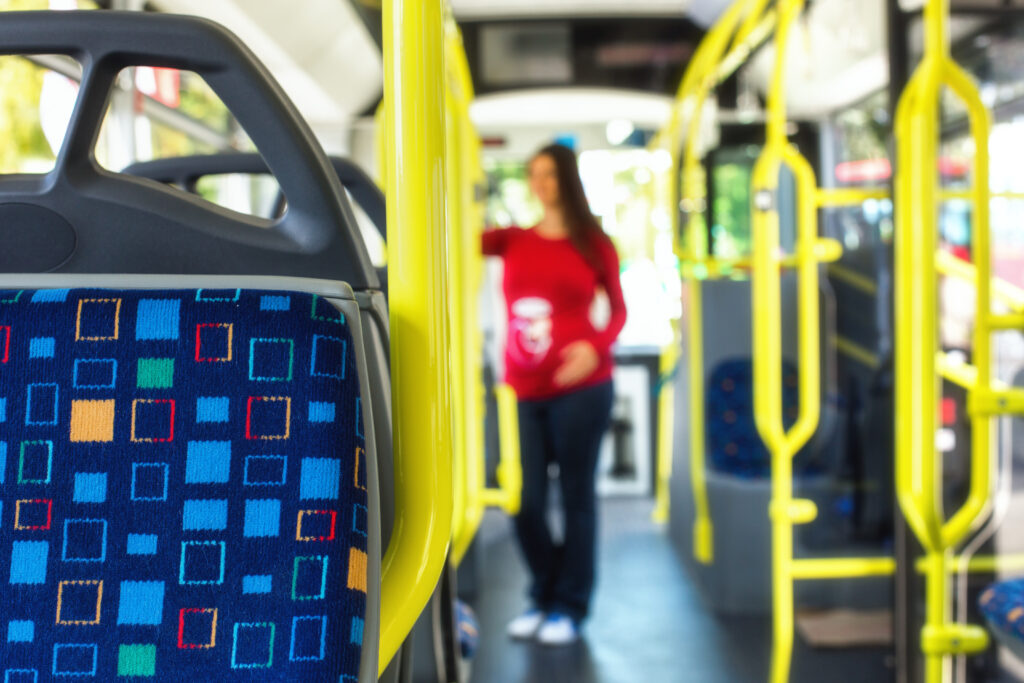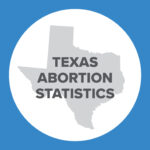Abortion Reporting: South Dakota (2018)
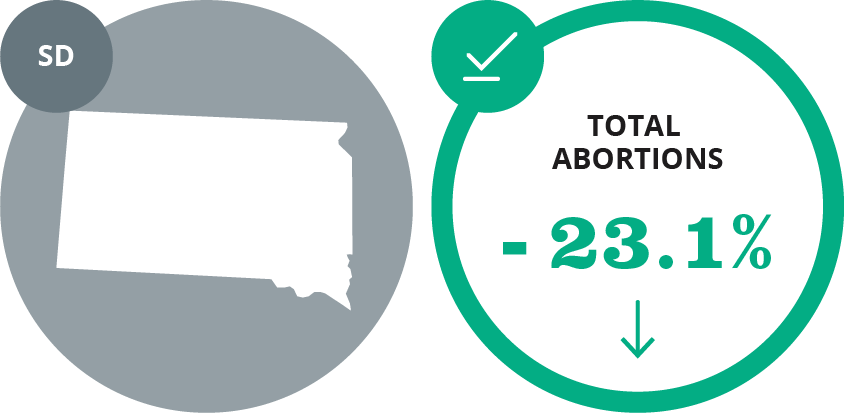
According to an annual abortion report published by the South Dakota Department of Health in July 2019, reported abortions in South Dakota hit a record low in 2018. The drop in abortions occurred after an increase in 2017.
Changes in South Dakota Abortions, 2017-2018
 Information on Planned Parenthood’s South Dakota market share is not publicly available. However, South Dakota’s only licensed abortion center is operated by Planned Parenthood.
Information on Planned Parenthood’s South Dakota market share is not publicly available. However, South Dakota’s only licensed abortion center is operated by Planned Parenthood.
Abortion Totals and Trends
There were 382 abortions reported in South Dakota in 2018, the lowest total ever reported in the state (Fig. 1). Since 1974, South Dakota’s first full year of abortion reporting, reported abortions have dropped by 76 percent. Reported abortions fell by 23 percent between 2017 and 2018, and chemical abortions dropped by 41 percent. Abortion totals in South Dakota have fluctuated but are trending downward. Chemical abortions made up 36 percent of the total in 2018, a lower proportion than in recent years. The Charlotte Lozier Institute estimates that South Dakota’s abortion rate in 2018 was 2.4 abortions per 1,000 women of childbearing age, down from 3.1 the previous year (Fig. 2).
State Report Summary
Seventy-eight percent of the abortions occurring in South Dakota in 2018 were performed on state residents, a lower proportion than in previous years. Fourteen percent of the women were from Iowa, five percent were from Minnesota, and three percent were from a different state. In 2018, four of South Dakota’s 66 counties had more than 10 resident women obtain abortions. There were 154 women from Minnehaha County, 19 from Lincoln County, 14 from Brookings County, and 11 from Clay County who got abortions in South Dakota.
Well over half the abortions reported in South Dakota, 58 percent, were performed on women in their twenties (just over 29 percent on women ages 20 to 24 and just under 29 percent on women ages 25 to 29). An additional 29 percent were on women in their thirties. Three percent of the women getting abortions were age 40 or older, and 11 percent were age 19 or younger.
Most of the abortions were performed on white women (70 percent). Thirteen percent were on black women, nine percent on American Indian women, and three percent on women of Asian ancestry. A little over four percent were on women of another or unknown race. Ninety percent of the women were non-Hispanic. Almost half the abortions (47 percent) were on women with a high school education or less. Twenty-seven percent were on women who had completed some college, and a quarter were on women who had obtained an associate’s degree, vocational-technical certification, or higher. Eighty-one percent of the women were not married, and 19 percent were married.
Seventy percent of the women undergoing abortions in South Dakota had never had an abortion before. Twenty percent had one previous abortion, and not quite 11 percent had two or more prior abortions. Thirty-five percent had no living children, compared to 25 percent with one child and 40 percent with two or more children. Eighteen percent had previously suffered a miscarriage.
The majority of South Dakota abortions, 88 percent, were self-funded. Seven percent were covered by private insurance, and just under five percent (17 abortions) were paid for by a public health plan, which the state defines as “any plan established or maintained by a state, county, or other political subdivision of a state that provides health insurance coverage to enrolled individuals.” Three-quarters of the abortions reported in the state cost between $600 and $699. Nine percent cost less than $600, and 16 percent cost $700 or more. Twelve percent were performed at six weeks of gestation or earlier. Forty percent were between seven and eight weeks, 31 percent between nine and 10 weeks, and eight percent between 11 and 12 weeks of gestation. Nine percent were performed at 13 weeks of gestation or later. The report does not indicate how many, if any, of these second-trimester abortions were performed after 20 weeks post-fertilization (approximately 22 weeks of gestation), the point at which South Dakota limits abortion to protect babies who are capable of feeling pain.
South Dakota’s only licensed abortion clinic, Planned Parenthood’s Sioux Falls location, advertises abortion through 13 weeks and 6 days of gestation. In addition, two South Dakota hospitals were inspected as abortion facilities in 2018. Planned Parenthood’s Minnesota, North Dakota, and South Dakota affiliate no longer includes abortion information in its annual report, but in 2018, the South Dakota legislature found that Planned Parenthood accounts for around 98 percent of South Dakota abortions. In 2018, 74 percent of the abortions reported in South Dakota were performed by physicians specializing in obstetrics and gynecology, and 26 percent were performed by doctors who specialized in family medicine.
Sixty-four percent of the abortions reported in South Dakota were suction abortions. Not quite 36 percent were chemical abortions, and half a percent were dilation and evacuation procedures. Two of the abortions required a secondary sharp curettage procedure to be completed. Sixty-four percent of the bodies of the babies killed by abortion were incinerated. Thirty-six percent were discarded as medical waste or discarded using another, unreported method. One baby was buried.
Sixty-four percent of the women undergoing abortions received local anesthesia, 36 percent received no anesthesia, and just half a percent were given general anesthesia. One abortion was reported to cause complications in 2018, although the annual report does not indicate the nature of the complication, and South Dakota has no requirement that medical providers report abortion complications they encounter.1 The month of May had the highest reported number of abortions (42), while April had the lowest (18).
South Dakota provides some information on the physical characteristics of the unborn babies killed by abortion. Two of the babies were known to have some form of abnormality, although the report does not specify which type. Thirty-seven percent of the babies aborted in South Dakota weighed less than a hundred grams (3.5 ounces). Not quite six percent weighed 100 to 124 grams, and four percent weighed 125 grams (4.4 ounces) or more. Weight was not reported for 53 percent of the babies killed by abortion.
South Dakota asks women who choose abortion to share their reasons for doing so. Women may select more than one reason. In 2018, 64 percent of the women did not want the child, 52 percent could not afford the child, and 17 percent chose abortion for their emotional health. Two percent (eight abortions) were performed due to risk to a major bodily function, and one percent (four abortions) were performed because of rape or incest. Eighteen percent of the abortions were performed for another reason.
Three business days before an abortion is performed, a woman must be provided with information to allow her to give her informed consent. There were 449 informed consent forms submitted to the South Dakota Department of Health in 2018. Of the 449 forms, 382 (85 percent) reported that the woman went on to obtain an abortion, and 381 indicated that the woman received the required information. One abortion was performed without the provision of the necessary information because a delay would have risked a major bodily function of the woman.
Before a minor can undergo an abortion in South Dakota, notice must be provided to a parent. There were 10 parental notification forms submitted to the health department in 2018. Eight indicated that notice had been provided to the young women’s parents, while two reported that a judge had waived the parental notification requirement. All 10 of the young women went on to obtain abortions.
Falling Abortions in South Dakota
Abortions dropped below 400 for the first time since South Dakota began reporting abortions in 1973. Much of the decrease was due to a sudden drop in reported chemical abortions and resident abortions. Abortions performed on South Dakota residents fell from 423 in 2017 to 297 in 2018, making up just 77 percent of the total in 2018 compared to an average of 86 percent over the previous decade. Chemical abortions dropped by 41 percent from approximately 232 in 2017 to approximately 136 in 2018 after increasing over the past two years. In comparison, abortions performed in South Dakota on nonresident women actually increased from 74 in 2017 to 85 in 2018, and suction abortions dropped by just seven percent (approximately 19 abortions).
Annual abortion reports from South Dakota’s neighboring states of Minnesota, North Dakota, Nebraska and Montana2 and nearby Colorado2 show that 326 South Dakota residents obtained abortions in these states in 2018, up from 253 in 2017 (a difference of 73 abortions). This increase in South Dakota women traveling to other states for abortions may account for part of the drop in resident abortions performed in South Dakota in 2018.
It is possible that another contributing factor to the apparent decrease in South Dakota abortions was the illegal online sale of abortion pills, which resulted in abortions that did not get reported to the state Department of Health. Beginning in 2018, an international organization called Aid Access began illegally shipping abortion drugs to the United States. Aid Access has acknowledged sending abortion pills to over 7,000 American women, and it is likely that some of these women were from South Dakota. In fact, an Aid Access letter to the U.S. Food and Drug Administration includes a statement from a South Dakota woman who obtained abortion pills from the organization. Relatedly, between 2011 and 2015, South Dakota’s online search rate for information on how to get an abortion without going to a clinic was at least 10% higher than the national average.
State Ranking
In the Charlotte Lozier Institute’s 2016 survey of abortion reporting across the county, South Dakota’s reporting tied for 7th best. South Dakota could improve its reporting by collecting additional information on abortion-related complications. One large study showed that chemical abortions have a complication rate as much as four times higher than that of surgical abortions. With unreported chemical abortions potentially occurring in South Dakota, accurate complication data is particularly relevant. South Dakota could consider requiring doctors who treat abortion-related complications to report them to the state health department, similar to requirements enacted by states like Texas.
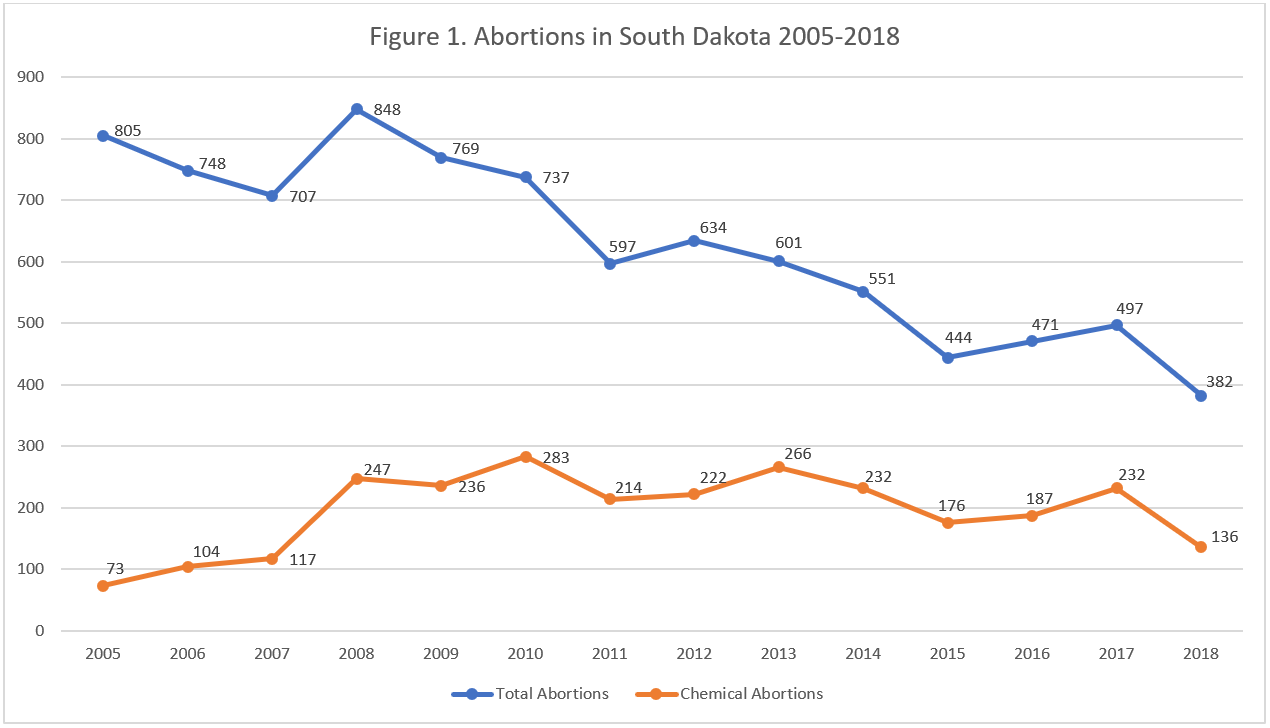
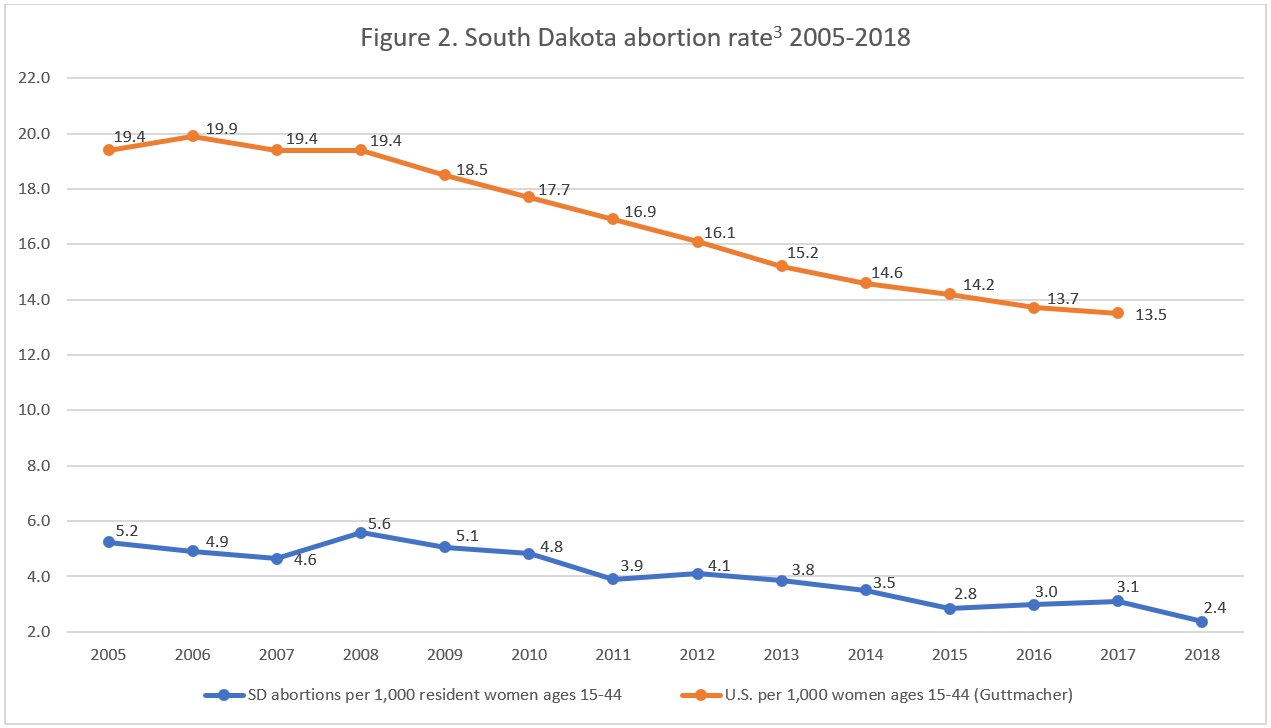
- Statistics on abortion complications reported here represent a minimal number of deaths and complications, as this data is collected in a non-systematic and non-verifiable way. As such, this data cannot be used to calculate either an accurate abortion mortality rate or an accurate abortion complication rate for the state.
- Colorado abortion reports for 2017 and 2018 were provided to the Charlotte Lozier Institute upon request. The Montana Department of Public Health and Human Services provided CLI with the number of South Dakota residents obtaining abortions in Montana in 2017 and 2018.
- Starting with the 2018 abortion reports, abortion rates are calculated by the Charlotte Lozier Institute to allow for easier state-to-state and year-to-year comparisons. Rates were calculated by CLI using population estimates from the United States Census Bureau. The rates were calculated using the following formula: (total number of abortions performed in South Dakota ÷ number of resident women ages 15-44) x 1,000. Rates may differ slightly from previous CLI articles due to revised population estimates.
Click here to view reporting from:2023202220212020201920172016


















